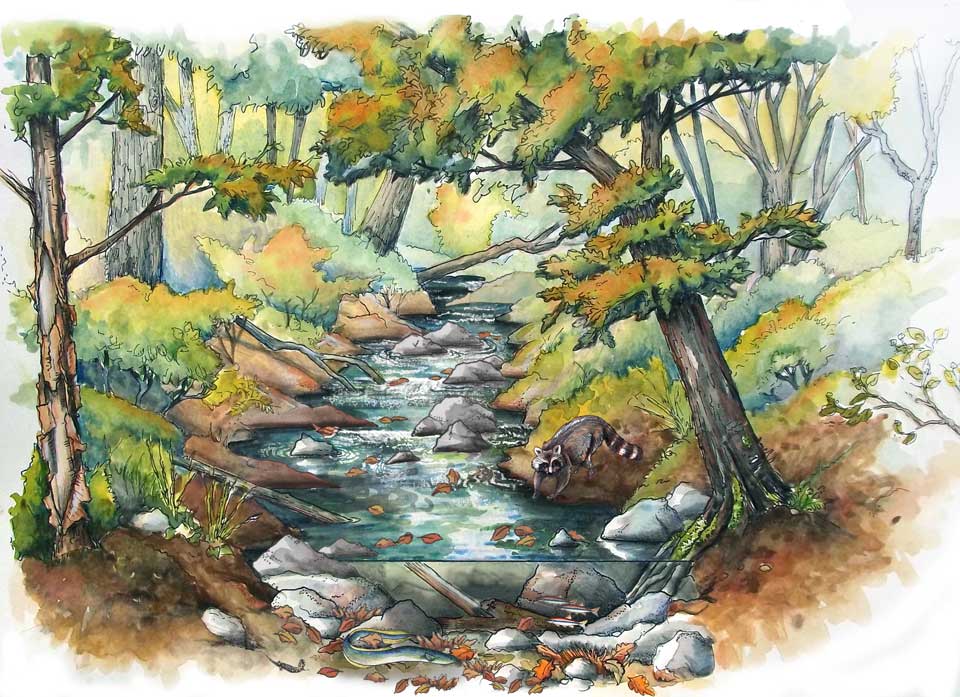
Biodiversity of Napa County
One of the most ecologically unique regions on Earth
Biodiversity hotspots
There are currently 36 recognized biodiversity hotspots on the planet.
These are Earth’s most biologically rich—yet threatened—terrestrial regions; places which have lost at least 70 percent of their native plants and habitats to human impact.
Biodiversity hotspots make up only 2.3 percent of Earth’s land surface, but host 44 percent of the world’s plants and 35 percent of wildlife.
The California Floristic Province
We live in a hotspot known as the California Floristic Province , located along North America's Pacific coast.
This biodiversity hotspot is a zone of Mediterranean-type climate, characterized by hot, dry summers and mild, wet winters.
Napa County is part of 1 of only 5 Mediterranean climate zones on Earth.
Mediterranean climates are rare but significant - covering only 2% of Earth's land area, but home to 20% of all the plant species in the world. (International Union for Conservation of Nature.)
Napa County is 1 of 10 Biodiversity Hotspots of California
Napa County represents less than .5% of California it contains 1/3 of the state’s native plant species and a uniquely high level of native fish diversity. (Napa County General Plan 2009)
Our county's 3 watersheds, the Napa River, Putah Creek, and Suisun Creek Basin are home to:
Likely, 60 special-status wildlife species: 39 birds, 11 mammals; 5 invertebrates, 3 amphibians, and 2 reptiles.
81 special-status plant species, 7 of which are endangered.
24 rare animal species tracked by the California Natural Diversity Database.
Forests
Napa County contains the eastern-most populations of coastal redwood forests in California, including trees which began growing around 1200 AD.
Napa County is extremely unique for its valley oak woodland forest-type, which harbor some of the highest plant and animal diversity in California . Oaks remove more carbon dioxide from the atmosphere per year than many other common landscaping trees and live for over 400 years.
A site of "hemispheric significance"
Marshes and wetlands of southern Napa County and the San Francisco Bay Area have been designated as wetlands of "International Importance" for their many ecosystem services.
Hundreds of species of birds including shorebirds, ducks, and birds of prey rely on habitats of Napa County for shelter, feeding, nesting, and resting. Migratory species such as cliff swallows using the Pacific Flyway connect us to ecosystems in Alaska, Canada, and Central and South America.
Fisheries
The Napa River has historically and currently supported the largest steelhead trout run in the Bay Area, and has one of the highest diversities of native fish species.
Out of all 9 Bay Area counties studied, the Napa River and Suisun Creek watersheds have been identified as "anchor watersheds," or ecosystems with the highest possibility of restoration to their historical state.
Special Status Species
Special status species are considered significantly rare and require special consideration and protection.
Special status species can be labeled as rare, threatened or endangered.
A threatened species is declining in population and could become an endangered or extinct species.
Special Status Species of Napa County
Ridgway's Rail
Pictured here is a Ridgway's rail, a native and endangered species found in the bay area wetlands. This species is almost entirely endemic to the San Francisco Bay Estuary, where the only known breeding population exists. (US Fish and Wildlife Service, 2017)
Salt Marsh Harvest Mouse
The salt marsh harvest mouse is another endangered and endemic species to our local salt marshlands.
They are one of the only mammals that can drink salt water to survive, and one of the only mice species that can swim.
St. Helena Fawn Lily
The St. Helena Fawn Lily is a rare plant found only in Napa, Lake and Sonoma counties. Blooming from March-May, this plant is fairly endangered and is threatened by horticulture collection, road construction and geothermal development ( California Native Plant Society )
Calistoga Popcornflower
The Calistoga Popcornflower is a rare and threatened species with only 2 known populations growing on privately owned land near Calistoga.
Photo credit: Robert E. Preston, Ph.D. 2014
California Freshwater Shrimp
Today the endangered California freshwater shrimp, growing to about 2.5 inches, can only be found in 16 stream segments across Marin, Napa and Sonoma counties.
This species is threatened by a many activities including but not limited to: water diversion and migration barriers, agriculture and livestock activities, loss of habitat and water pollution.
